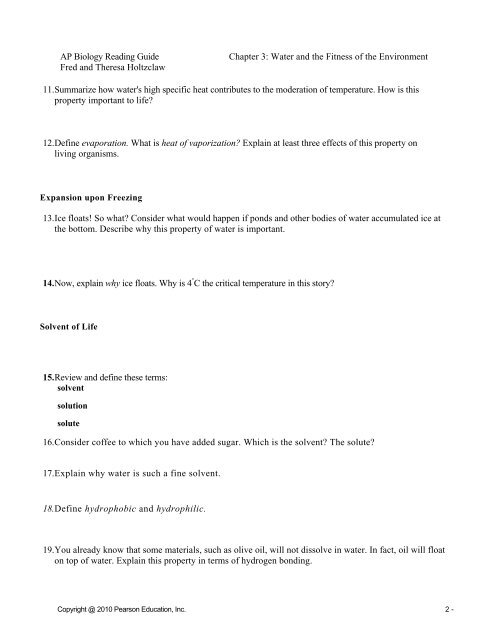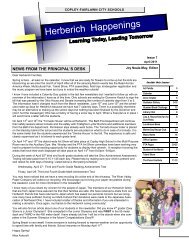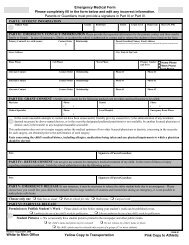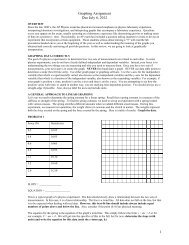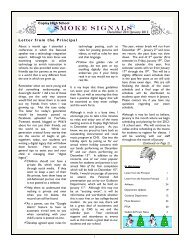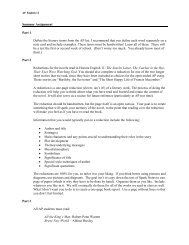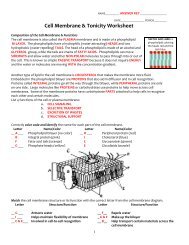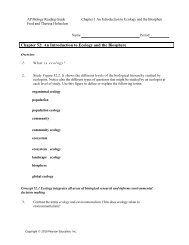Chapter 2: The Chemical Context of Life - Copley-Fairlawn City
Chapter 2: The Chemical Context of Life - Copley-Fairlawn City
Chapter 2: The Chemical Context of Life - Copley-Fairlawn City
You also want an ePaper? Increase the reach of your titles
YUMPU automatically turns print PDFs into web optimized ePapers that Google loves.
AP Biology Reading Guide <strong>Chapter</strong> 3: Water and the Fitness <strong>of</strong> the Environment<br />
Fred and <strong>The</strong>resa Holtzclaw<br />
11. Summarize how water's high specific heat contributes to the moderation <strong>of</strong> temperature. How is this<br />
property important to life?<br />
12. Define evaporation. What is heat <strong>of</strong> vaporization? Explain at least three effects <strong>of</strong> this property on<br />
living organisms.<br />
Expansion upon Freezing<br />
13. Ice floats! So what? Consider what would happen if ponds and other bodies <strong>of</strong> water accumulated ice at<br />
the bottom. Describe why this property <strong>of</strong> water is important.<br />
14. Now, explain why ice floats. Why is 4 ° C the critical temperature in this story?<br />
Solvent <strong>of</strong> <strong>Life</strong><br />
15. Review and define these terms:<br />
solvent<br />
solution<br />
solute<br />
16. Consider c<strong>of</strong>fee to which you have added sugar. Which is the solvent? <strong>The</strong> solute?<br />
17. Explain why water is such a fine solvent.<br />
18. Define hydrophobic and hydrophilic.<br />
19. You already know that some materials, such as olive oil, will not dissolve in water. In fact, oil will float<br />
on top <strong>of</strong> water. Explain this property in terms <strong>of</strong> hydrogen bonding.<br />
Copyright @ 2010 Pearson Education, Inc. 2 -


